I want to implement a change log as advised in Dev Express XAF T474899
I am using the security system generated by the XAF new solution wizard
I have defined some business objects to store the change log information.
One of these objects stores a link to the user
public virtual User User { get; set; }
On generating the code migration I am surprised to see the Up() method add the following
RenameTable(name: "dbo.UserRoles", newName: "RoleUsers");
DropPrimaryKey("dbo.RoleUsers");
AddPrimaryKey("dbo.RoleUsers", new[] { "Role_ID", "User_ID" });
On another occasion I found the following in an Up()
RenameTable(name: "dbo.EventResources", newName: "ResourceEvents");
// lots of other stuff
DropPrimaryKey("dbo.ResourceEvents");
AddPrimaryKey("dbo.ResourceEvents", new[] { "Resource_Key", "Event_ID" });
On both occasions the code that creates the entities is a Dev Express libary.
I have cross posted this question to Dev Express Support
The Dev Express business objects are defined in DevExpress.Persistent.BaseImpl.EF;
My DbContext context refers to them as
public DbSet<Role> Roles { get; set; }
public DbSet<User> Users { get; set; }
My own business classes contain
namespace SBD.JobTalk.Module.BusinessObjects
{
[NavigationItem("Configuration")]
[DisplayName("Staff")]
[DefaultProperty("Summary")]
[ImageName("BO_Employee")]
[Table("Staff")]
public class Staff : BasicBo
{
public Staff()
{
Person = new Person();
}
public virtual Person Person { get; set; }
[StringLength(100, ErrorMessage = "The field cannot exceed 100 characters. ")]
[scds.Index("IX_Staff_UserName", 1, IsUnique = true)]
public string UserName { get; set; }
[NotMapped]
public string Summary => $"{Person.FirstName} {Person.LastName}";
//public virtual User User { get; set; }
}
}
public abstract class BasicBo : IXafEntityObject
{
[Browsable(false)]
[Key]
public virtual int Id { get; set; }
public virtual void OnCreated()
{
}
public virtual void OnSaving()
{
}
public virtual void OnLoaded()
{
}
}
If I un-comment the code to have the User property inside Staff, and generate a migration, the migration Up is
public override void Up()
{
RenameTable(name: "dbo.UserRoles", newName: "RoleUsers");
DropPrimaryKey("dbo.RoleUsers");
AddColumn("dbo.Staff", "User_ID", c => c.Int());
AddPrimaryKey("dbo.RoleUsers", new[] { "Role_ID", "User_ID" });
CreateIndex("dbo.Staff", "User_ID");
AddForeignKey("dbo.Staff", "User_ID", "dbo.Users", "ID");
}
[Update] Interestingly there are more Dev Express tables than I first thought. The primary keys are Identity.
 I think am using Standard Authentication created before Dev Express added the Allow/Deny ability (V16.1)
I think am using Standard Authentication created before Dev Express added the Allow/Deny ability (V16.1)
[Update] When I create a new project with the above settings, here is the DbContext.
using System;
using System.Data;
using System.Linq;
using System.Data.Entity;
using System.Data.Common;
using System.Data.Entity.Core.Objects;
using System.Data.Entity.Infrastructure;
using System.ComponentModel;
using DevExpress.ExpressApp.EF.Updating;
using DevExpress.Persistent.BaseImpl.EF;
using DevExpress.Persistent.BaseImpl.EF.PermissionPolicy;
namespace XafApplication1.Module.BusinessObjects {
public class XafApplication1DbContext : DbContext {
public XafApplication1DbContext(String connectionString)
: base(connectionString) {
}
public XafApplication1DbContext(DbConnection connection)
: base(connection, false) {
}
public XafApplication1DbContext()
: base("name=ConnectionString") {
}
public DbSet<ModuleInfo> ModulesInfo { get; set; }
public DbSet<PermissionPolicyRole> Roles { get; set; }
public DbSet<PermissionPolicyTypePermissionObject> TypePermissionObjects { get; set; }
public DbSet<PermissionPolicyUser> Users { get; set; }
public DbSet<ModelDifference> ModelDifferences { get; set; }
public DbSet<ModelDifferenceAspect> ModelDifferenceAspects { get; set; }
}
}

